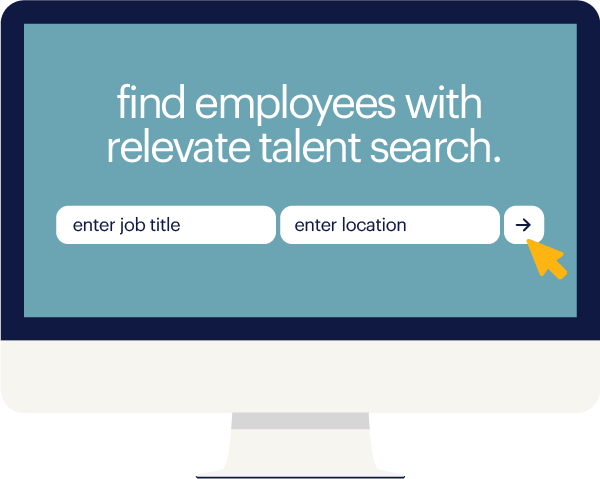As many businesses get ready to reopen their doors, much has been discussed about what work will look like in the new normal — but the new normal isn't the same for everyone. Depending on the nature of your workforce you could:
-
reopen completely, requiring everyone back onsite
-
stay fully remote
-
have some teams onsite while others work from home
Each model has its own merits, but whichever one you choose, your approach to establishing the model will be different. As you get set drafting your own return-to-work plans, review these three models below in more detail to find an approach that makes the most sense for your business and the health and safety of your team.
everyone back onsite
While stay-at-home orders forced many companies to work remotely, that option isn't available to everyone. If the nature of your business requires staff to be onsite to get things done, then your return-to-work plan should account, first and foremost, for the health and safety of your employees.
A recent poll found that 54 percent of workers are concerned about workplace exposure to COVID-19. And yet, despite those concerns, 71 percent expressed confidence in their employers' ability to bring them back safely.
 71% of employees are confident that their employers can help them return to work safely.
71% of employees are confident that their employers can help them return to work safely.
Returning to work will be counterproductive if employees don't have faith in leadership's ability to keep them safe on the job. Besides the health risks, that kind of widespread uncertainty could lead to reduced productivity, increased absences and even resignations.
Fortunately, that same poll revealed some steps you can take to ensure your employees feel safe coming back. Employees said the measures that would make them feel most safe were:
-
having enough masks, gloves and hand sanitizer onsite (58%)
-
strict policies mandating that sick employees stay home (55%)
-
access to COVID-19 testing (53%)
But reimagining your workplace through this new lens will require more than just implementing practical precautionary measures. You'll need to make changes to the physical ebb and flow of your daily operations to further reduce risk of exposure to the virus. That means implementing changes like:
-
redesigning your office or facility's layout to accommodate social-distancing guidelines
-
limiting the capacity of break areas and conference rooms
-
structuring high foot-traffic areas with arrow markings to prevent clustering
-
flex scheduling so the same work gets done, just at different times and with different shifts to limit the amount of workers onsite
tools to safely return onsite:
- learn everything you need to know about returning to work safely with this comprehensive guide
- never miss a step with safety: consult our onsite protocol safety checklist
fully remote
If your business has been working from home since the start of the pandemic and none of your roles are needed onsite, then the safest measure to take once guidelines start loosening may be simply to stay the course.
Disruptions to working patterns due to COVID-19 have launched a nationwide work-from-home experiment, with many businesses finding themselves capable of conducting business remotely for the first time. By some estimates, working from home has had a negligible one percent impact on productivity. That's a relatively small price to pay in exchange for the health and safety of your team.
And yet, if you're like most companies, you probably were forced to make that transition hastily and with little warning due to the sudden nature of the COVID-19 outbreak. That means there are likely areas where you can improve as you commit to working from home over the long term.
With the immediate safety of your employees taken care of, you'll be free to focus less on people and more on processes. Start by assessing the current maturity level of your remote operations to see where you stand, then move toward improving the areas you find deficient.
Working from home also means that strengthening employee communication is more important than ever. Ask yourself: Are the collaborative platforms I'm using effective, or are there missing features that seem to be hindering collaboration? Step back and account for the bigger picture, too. There's an inherent flexibility to the way work gets done at home. If you were used to measuring employee productivity by the amount of time spent physically onsite, then start working toward new benchmarks to measure performance by projects or deliverables, and reflect on whether or not you need to adjust – or even create – new roles entirely.
Beyond the health benefits, a fully remote workforce also comes with reduced costs compared to other models. With your entire workforce working from home, you may not need to continue paying for office space, or at the very least, one that’s smaller than what you originally had.
tools for remote workforce transitions:
-
remote-workforce efficiency tips to help your teams stay productive from home
-
assess the maturity level of your remote-work operations with our webinar, “how to achieve predictable success in a remote workforce environment.”
-
tech, tools and talent all under one roof with our remote work solutions staffing partnership
a blended approach
If you're finding that the models at either end of the spectrum don't apply to you due to the nature of your business, then consider reopening with a blended approach.
Examine your teams, and identify candidates that can work from home along with those that need to be brought back in. Follow the onsite safety guidelines discussed above for your returning workers. While risk of exposure will be lower with a portion of your workforce working elsewhere, you can't afford to skimp on any of the aforementioned safety precautions for those who are coming in.
keep remote and onsite teams connected to avoid disruption to daily workflow.
For your remote workers, continue to ensure that they have all the necessary technology to get work done, and take extra care to ensure seamless communication between on- and offsite teams. Additional questions of workplace morale will have to be taken into account, too, with this particular type of return-to-work approach. How do you keep your remote employees from feeling disconnected from their colleagues back at work? How do you keep teamwork and collaboration strong? Give everyone access to the same working platforms your remote teams are using, not just managers, and consider having more team members join in on video calls to increase face-time.
Following the blended approach may come with some extra leg work, as you'll have to focus simultaneously on strengthening and balancing both in-office and virtual teams. But for workplaces where none of the all-or-nothing approaches fit, it's the best chance at ensuring both business and employee health.
tools for a blended-approach:
-
get workplace safety tips to help ensure the safety of your onsite workers with our comprehensive guide
-
strengthen your remote operations with our workforce assessment and solutions services
-
see where your current work-from-home operations stand and where you can improve on our remote workforce webinar
No matter which path you end up taking, it's not one you have to walk alone. Visit our COVID-19 resource center for more tips on safety, navigating the new normal and keeping your workforce productive and engaged during these trying times. This is uncharted territory for everyone, but if we tackle the problem together, we'll get through it in the end.








